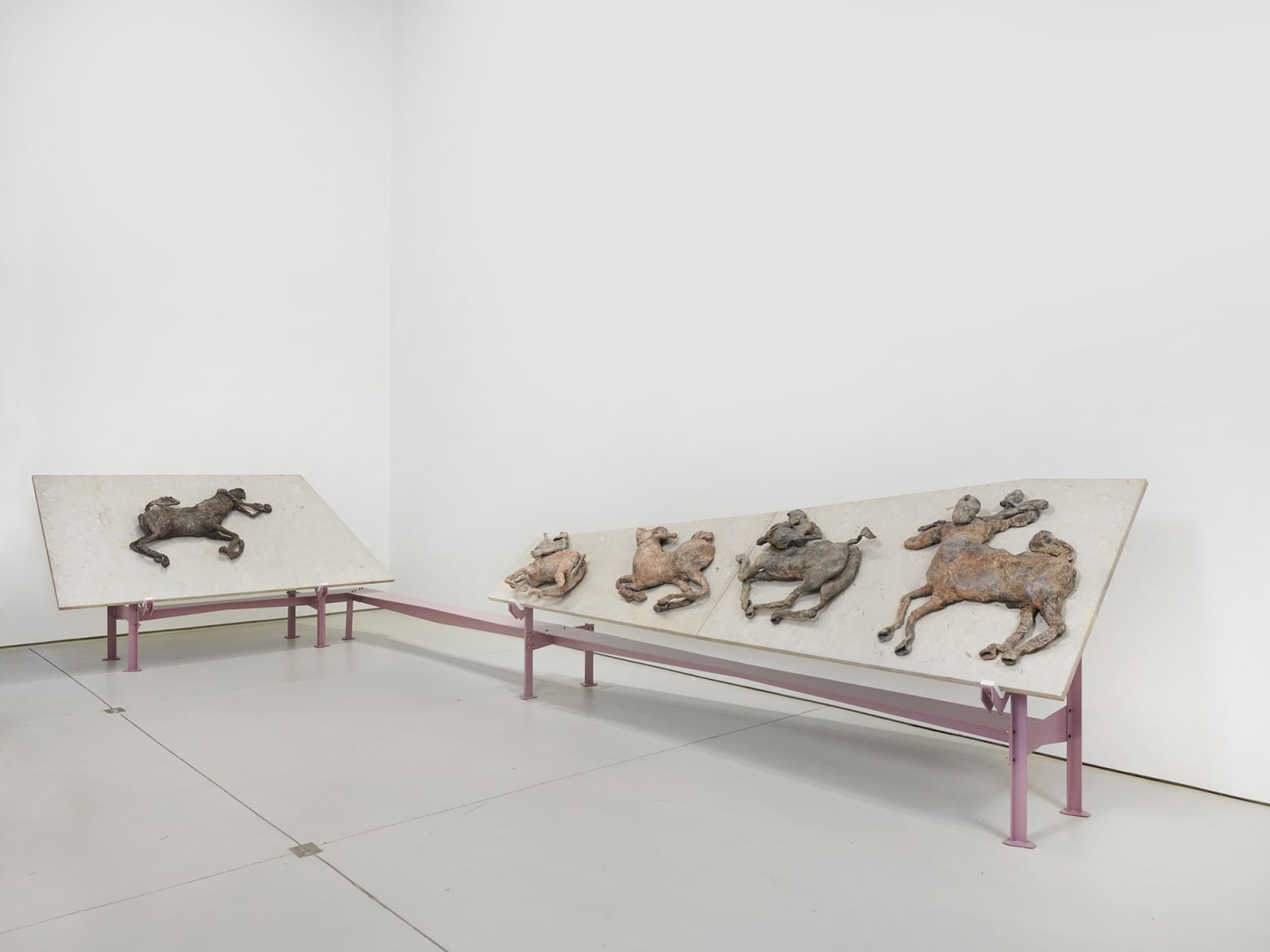

Francis Upritchard b. 1976
Wetwang Slack West and South Relief (constellation), 2018-2021
Bronze, stone, powder coated steel, plastic
Butter Fingers: 30 3/4 x 38 x 6 3/4 inches (78 x 96.5 x 17 cm)
Centaur with Pot: 21 1/4 x 21 5/8 x 7 1/4 inches (54 x 55 x 18.5 cm)
Conker: 24 3/4 x 26 5/8 x 4 3/4 inches (63 x 67.5 x 12 cm)
Rock Drop: 25 1/4 x 31 1/2 x 6 1/4 inches (64 x 80 x 16 cm)
Big Brute: 34 5/8 x 33 1/8 x 6 1/4 inches (88 x 84 x 16 cm)
Centaur with Pot: 21 1/4 x 21 5/8 x 7 1/4 inches (54 x 55 x 18.5 cm)
Conker: 24 3/4 x 26 5/8 x 4 3/4 inches (63 x 67.5 x 12 cm)
Rock Drop: 25 1/4 x 31 1/2 x 6 1/4 inches (64 x 80 x 16 cm)
Big Brute: 34 5/8 x 33 1/8 x 6 1/4 inches (88 x 84 x 16 cm)
Exhibitions
London, The Curve, Barbican Centre, Francis Upritchard: Wetwang Slack, September 27, 2018 - January 6, 2019
Sint Martens-Latem, Belgium, Museum Dhondt-Dhaenens, Big Fish Eat Little Fish, March 1 - May 31, 2020
New York, Anton Kern Gallery, Francis Upritchard: Wetwang Slack, November 18 - December 18, 2021
Hudson, NY, The Campus, Second Annual Exhibition, June 28 - October 26, 2025

